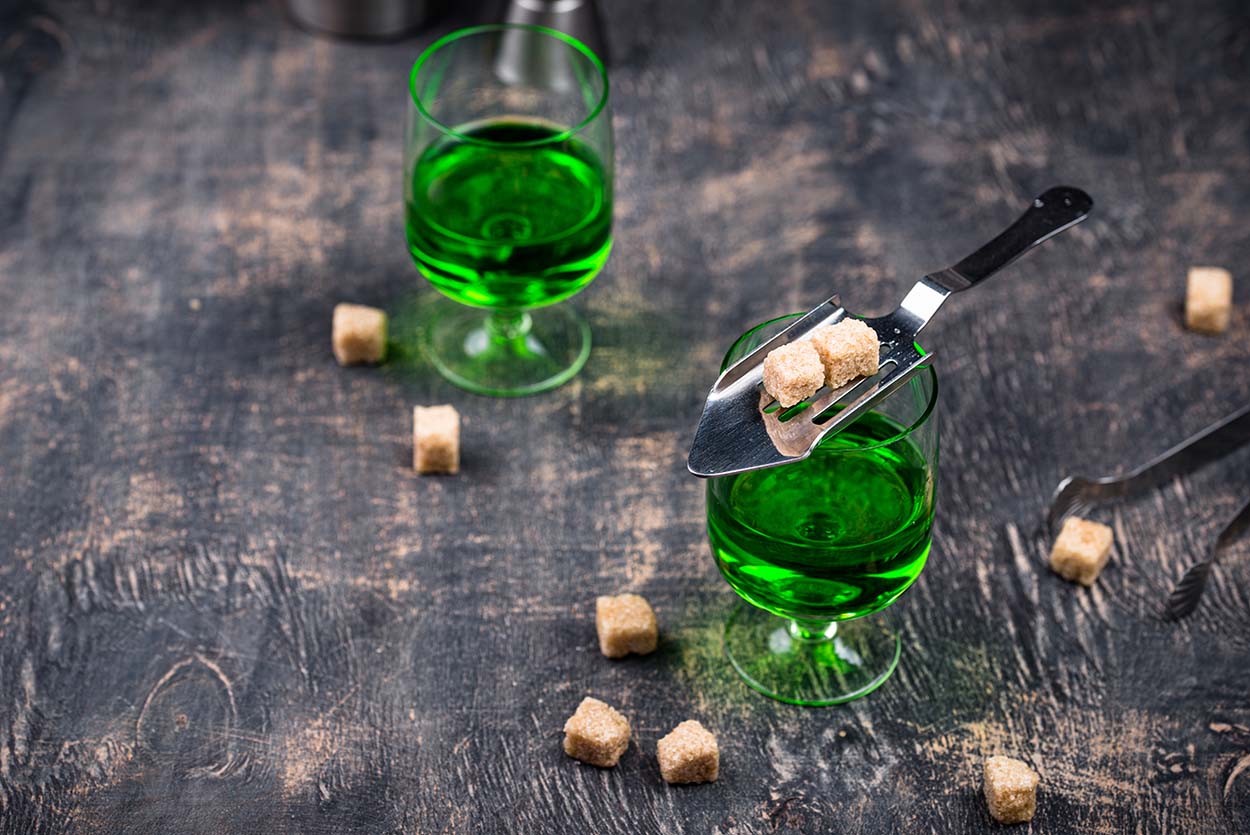Absinthe, the enigmatic green spirit that has captivated artists, writers, and adventurous drinkers for centuries, is celebrated annually on March 5th, known as National Absinthe Day. This day pays homage to the storied history and allure of the “Green Fairy,” as it is affectionately nicknamed. From its humble beginnings as a medicinal elixir to its rise as a cultural icon, absinthe has left an indelible mark on the world of spirits.
The Origins of Absinthe
- Absinthe was first created in Switzerland in the late 18th century by Dr. Pierre Ordinaire as a medicinal elixir
- The recipe was later sold to Henri-Louis Pernod, who opened the first absinthe distillery in France in 1805
- It gained popularity as a recreational drink in Paris during the late 19th and early 20th centuries, particularly among bohemian artists and writers
- The spirit is made from botanicals, including grand wormwood, green anise, sweet fennel, and other herbs, which give it its distinct green color and complex flavor profile
The Controversy
- Absinthe’s high alcohol content (often between 50-70% ABV) and alleged psychoactive properties led to speculation about its effects on the mind
- The chemical compound thujone, found in wormwood, was believed to cause hallucinations, insanity, and even violent behavior
- Concerns and lobbying efforts from the temperance movement and wine industry resulted in the ban of absinthe in several countries, including the United States, in the early 1900s
Fun Fact: It was rumored that Vincent van Gogh cut off his ear while under the influence of absinthe, adding to the spirit’s notorious reputation. However, this claim has been disputed by historians.
The Resurrection
- In recent years, absinthe has experienced a resurgence in popularity as more people discover its unique flavor and cultural significance
- Many countries have lifted their bans, and the spirit is now legally produced and sold worldwide
- Modern-day absinthe has lower alcohol content and thujone levels than its historical counterparts, making it safer to consume
- Craft distilleries have emerged, experimenting with new botanical blends and production methods to create unique variations of the classic spirit
Celebrating National Absinthe Day
- Enthusiasts gather on March 5th to celebrate the spirit’s rich history, unique flavor profile, and traditional preparation ritual
- The proper way to enjoy absinthe involves placing a sugar cube on a specialized slotted spoon over a glass containing a shot of absinthe
- Ice-cold water is slowly dripped over the sugar cube, dissolving it and causing the absinthe to louche (turn cloudy) as the essential oils are released
- The louching effect creates a mesmerizing visual experience, adding to the allure and mystique of the drink
Fun Fact: The term “Green Fairy” comes from the absinthe’s green color and its supposed hallucinogenic effects, which have been largely debunked by modern science.
Conclusion National Absinthe Day serves as a reminder of the spirit’s enduring legacy and its ability to captivate the minds and palates of those who dare to explore its mysteries. From its storied past to its modern-day revival, absinthe has proven to be a resilient and beloved spirit that continues to inspire and intrigue. So, on March 5th, gather with fellow enthusiasts, raise a glass of the emerald-hued elixir, and toast to the enduring allure of the Green Fairy.
Fun Fact: In the 1990s, a British importer named George Rowley used a legal loophole to challenge the European Union’s absinthe laws. His efforts helped pave the way for the re-legalization of absinthe in many countries, sparking a renewed interest in the spirit.
